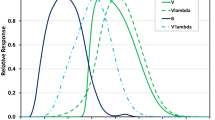Abstract
In recent years, there have been an increasing concern in the world regarding the impact of technology on the development prospects of astronomical observations from the Earth’s surface and near-Earth space, which was called the Dark and Quiet Sky problem. There are three categories of artificial interference negatively affecting astronomical observations: (i) city lighting or artificial lighting at night; (ii) optical/infrared trails of satellites in low Earth orbit; and (iii) radio transmission by ground- and space-based emitters, especially, being onboard low Earth-orbiting satellites. Concerns regarding the interference in categories (ii) and (iii) have increased because of the rapid deployment of a large number of low Earth-orbiting satellites designed to provide global network communications. Examples of these satellite constellations, the implementation of which is in full swing, are known to all. Among them are mega-constellations of the Starlink, OneWeb, Amazon, Samsung, and other projects, including the Russian project called “Sfera” (Sphere). For the last two years, astronomers and other experts in observations of objects in the near-Earth space (NES) held several international conferences on the subject. In general, the world astronomical community is actively preparing to parry the dangers associated with the Dark and Quiet Sky problem; and Russia cannot remain on the sidelines, although Russia’s contribution here has been insignificant so far. This is partly due to a lack of awareness of the problem among Russian specialists and decision makers and its growing acuteness. This brief review discusses both technical and organizational aspects of the influence of large satellite constellations on exacerbating the Dark and Quiet Sky problem.











Similar content being viewed by others
Notes
The diagram was taken from the web-site https://www.eso.org/~ohainaut/satellites/.
https://www.williamsseaandsky.com/?page\_id=8169.
REFERENCES
C. Walker, S. di Pippo, M. Aubé, J. Barrentine, et al., Report on the Conference, October 5–9, 2020.
C. Walker, S. di Pippo, M. Aubé, J. Barrentine, et al., Report on the Conference, October 3–7, 2021.
C. Walker, The NOIRLab Mirror 2, 74 (2021).
J. Hall, C. Walker, M. Rawls, J. McDowell, et al., Bull. Am. Astron. Soc. 53, 1 (2021).
A. Williams, O. Hainaut, A. Otarola, G. H. Tan, A. Biggs, N. Phillips, and G. Rotola, arXiv: 2108.03999 [astro-ph.IM] (2021).
H. Krantz, E. C. Pearce, and A. Block, arXiv: 2110.10578 [astro-ph.IM] (2021).
C. G. Bassa, O. R. Hainaut, and D. Galad -Enriquez, Astron. Astrophys. 657, A75 (2022); arXiv: 2108.12335 [astro-ph.IM].
N. Reiland, A. J. Rosengren, R. Malhotra, and C. Bombardelli, Adv. Space Res. 67, 3755 (2021); ar-Xiv: 2002.00430 [astro-ph.EP].
J. A. Tyson, Ž. Ivezić, A. Bradshaw, M. L. Rawls, et al., Astron. J. 160, 226 (2020); arXiv: 2006.12417 [astro-ph.IM].
M. L. Rawls, H. B. Thiemann, V. Chemin, L. Walkowicz, M. W. Peel, and Y. G. Grange, Res. Notes Am. Astron. Soc. 4, 189 (2020); arXiv: 2011.05168 [physics.pop-ph].
O. R. Hainaut and A. P. Williams, Astron. Astrophys. 636, A121 (2020), arXiv: 2003.01992 [astro-ph.IM].
D. Bektešević, D. Vinković, A. Rasmussen, and Ž. Ivezić, Mon. Not. R. Astron. Soc. 474, 4837 (2018); arXiv: 1707.07223 [astro-ph.EP].
M. Iye, M. Tanaka, M. Yanagisawa, N. Ebizuka, et al., Publ. Astron. Soc. Jpn. 59, 841 (2007); arXiv: 0704.3491 [astro-ph].
Author information
Authors and Affiliations
Corresponding author
Additional information
Translated by E. Petrova
Rights and permissions
About this article
Cite this article
Shustov, B.M. Satellite Mega-Constellations and the Dark and Quiet Sky Problem. Astron. Rep. 66, 725–735 (2022). https://doi.org/10.1134/S1063772922090104
Received:
Revised:
Accepted:
Published:
Issue Date:
DOI: https://doi.org/10.1134/S1063772922090104




